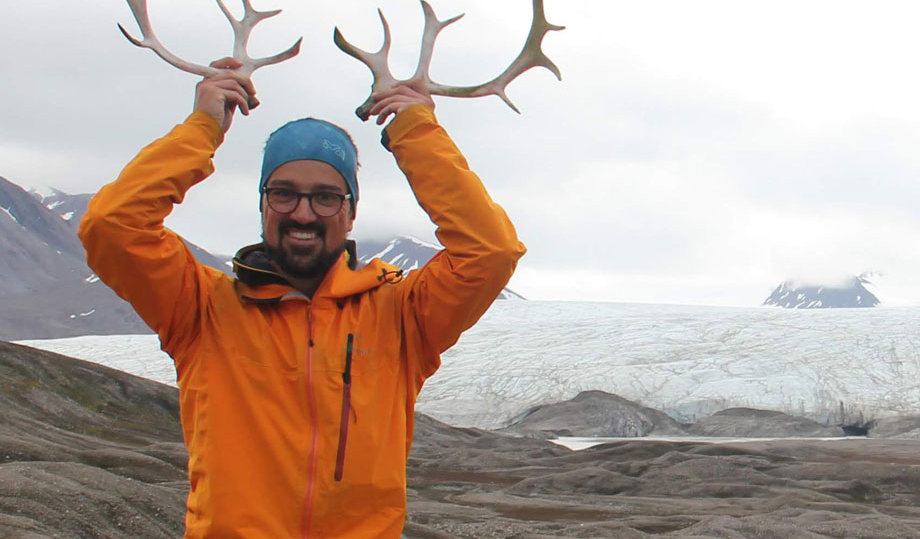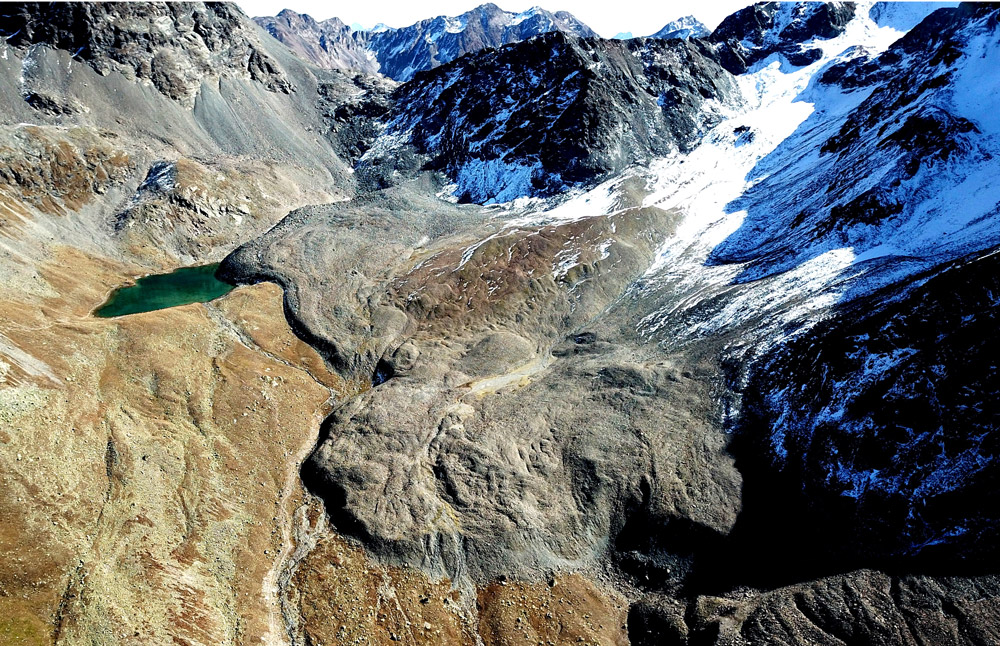#59: Panta rhei - everything flows
In high alpine regions, ice keeps masses of loose debris together. Alessandro Cicoira computed the influence of climate on the dynamics of rock glaciers as part of his PhD thesis - which he will defend in a few days!

Talking about glaciers, a lot of people associate glistening, blueish ice. But rock glaciers look completely different.
Right, at first glance you can only see the debris. Rock glaciers consist of loose rock material that are held together by ice. They creep downhill at a slow rate and develop typical structures, such as tongues and ridges. However, their origin and behaviour are different to ice glaciers.
What exactly are you studying?
I am interested in the dynamics of their movement. Actually, a lot is known about how the rock glaciers move, but not why. Many years of permafrost measurements are available in the Swiss Alps, particularly from the Swiss Permafrost Monitoring Network (PERMOS). In addition, for some rock glaciers we now have continuous data on their surface velocities via GPS measurements. However, some important questions are still open. What is the impact of rising temperatures? What is the influence of snow melt and rain? This is where my dissertation comes in.
Temperature - and thus heat conduction into the depths of the rock glacier - was for a long time considered to be the driving force for the seasonal and inter-annual flow pattern. We recently disproved this paradigm: it is the water from rain and snow melt that is responsible for the variations. We compared our numeric model with data from the Dirru Rock Glacier in Vallis, Switzerland. And in fact, we could reproduce the observed velocity variations both in magnitude and phase between summer and winter as well as over several years.
Why is this relevant?
Climate change will cause permafrost in high mountain regions to thaw into deeper layers. The ice will no longer stabilise fragile rocks and steep slopes, resulting in an increased occurrence of landslides and rock falls. Understanding these relationships is fundamental for effective natural hazard management.
How did you come to this topic?
I studied environmental engineering in Trento, Italy, with a focus on natural hazards. In the last year of my studies I worked on avalanche dynamics and then wrote my master thesis at the SLF in Davos. There I experienced a research culture which was very stimulating for me. The hierarchy was flat, everyone could bring in and implement new ideas. This awakened my desire to continue working in research. And geomorphodynamics is a very young research field. So, you soon have the opportunity to contribute something substantial.

You never studied glaciology. How did you gain this knowledge?
For example, at summer schools. One of them was in Spitsbergen. For five weeks we had theory, field work and also an individual research project. It was very exciting and very strenuous. We wanted to explore the impressive landscape even more and so we went hiking after dinner and came back for breakfast. It was daylight around the clock. But then I was all done!
I think these activities that you do in addition to the actual research work are very important. A PhD can also be done fairly 'quick and dirty'. But these courses and the associated networking give you a more holistic perspective. And there are so many possibilities! For example, I also did courses in project management, presentation techniques and voice training. This has a value that goes far beyond the PhD and helps me a lot for my professional and personal development.
Soon you will defend your thesis. What will your next steps be?
In the past months I wrote the manuscript of my thesis, but also contributed to two research proposals. Towards the end of the PhD things got even more exciting. There are plenty of interesting projects going on, endless data to analyse and new ideas to put into practice. Currently I am living in Fribourg, where I am working on standard guidelines for inventorying rock glaciers at a global scale. Then... a good break before the next commitment!
Cicoira, A, Beutel, J, Faillettaz, J, and Vieli, A: Water controls the seasonal rhythm of rock glacier flow. Earth and Planetary Science Letters. Volume 528, 15 December 2019, 115844
